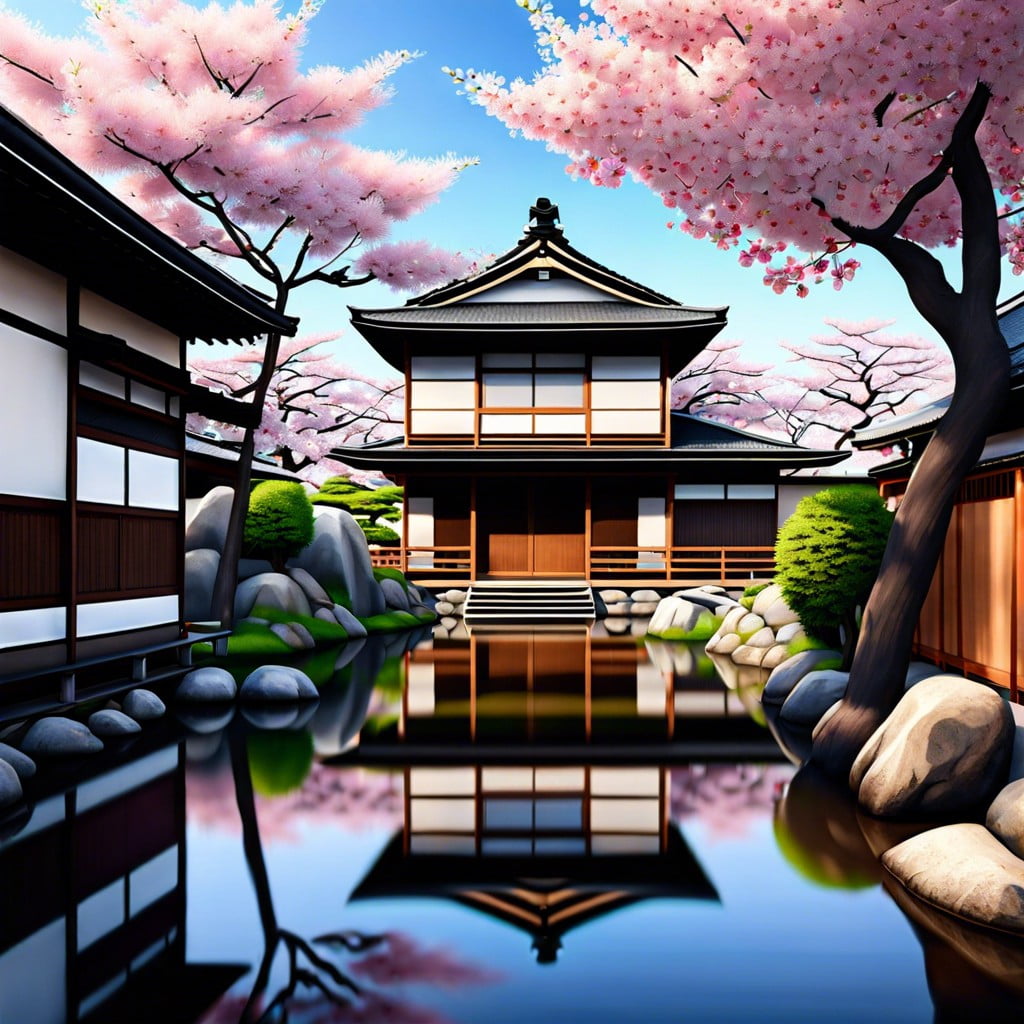Explore the sophistication of the East at your next social gathering because this event planning guide will transform your usual soirée into an unforgettable Kimono party.
Key takeaways:
- Kimono parties celebrate Japanese fashion and culture.
- Kimonos have a rich historical and cultural significance.
- Different types of kimonos are appropriate for different occasions.
- Kimono fabric choices and seasonal considerations are important.
- Kimono accessories, hairstyles, makeup, and photography tips complete the look.
Definition of Kimono Party

A kimono party is a social gathering where attendees wear kimonos, traditional Japanese garments, celebrating not just the attire but the cultural heritage that comes with it.
Such events often emphasize the appreciation of Japanese aesthetics and can include various activities, from tea ceremonies to calligraphy, enhancing the immersive experience of traditional Japanese culture.
These parties cater to both aficionados of Japanese fashion and those looking to engage with cultural practices in an authentic, respectful manner.
As a visually compelling and culturally rich theme, a kimono party presents the perfect merger of social interaction, artistic expression, and educational opportunity, all wrapped in the elegance of Japanese tradition.
Historical Significance of the Kimono

Tracing its roots back to the Heian period (794-1185), the kimono emerged as the quintessential Japanese garment, evolving from the simple ‘kosode’, a garment with small sleeves. Its aesthetic and practical transformation mirrors Japan’s own cultural shifts.
Over centuries, artisans have infused kimonos with regional significance, each motif and color weaving a narrative of geography, politics, and social status. For the aristocracy, luxurious patterns showcased wealth and power, while the working class wore more subdued styles for everyday tasks.
Samurai families utilized the kimono to display family crests and reinforce feudal allegiances during the Edo period (1603-1868). The kimono’s sartorial language also extended to the subtleties of personal messages—certain patterns could suggest seasons, celebrations, or even romantic intentions.
The Meiji era (1868-1912) saw the Western dress gaining favor, yet the kimono persisted as a symbol of national identity, particularly during festivities or formal gatherings. During this phase, the art of kimono-making reached new heights, embedding artisanal craftsmanship into Japan’s cultural legacy.
In modern times, kimono-wearing at parties and celebrations serves as a conduit to this rich historical tapestry, honoring the artisans’ skills and the wearer’s connection to tradition.
Types of Kimonos Appropriate for Parties
Selecting the right kimono for a party hinges on understanding the formality of the event and the time of day it occurs.
- Furisode: Full-length sleeves distinguish this style, which is most suitable for young, unmarried women attending formal events.
- Houmongi: Characterized by elegant patterns that extend over the shoulders and seams, these are versatile for both married and unmarried women at semi-formal gatherings.
- Iromuji: Monochromatic kimonos, subtly elegant, are a refined choice for tea parties and daytime events.
- Komon: With a small, repeated pattern, this kimono is a tasteful option for casual parties and less formal affairs.
Each kimono type is a symbol of the wearer’s attentiveness to the occasion’s decorum, embodying the quiet luxury and cultural richness of the traditional Japanese wardrobe. Consider the party’s setting and intention when choosing, reflecting respect for the occasion and its hosts.
Kimono Fabric Choices and Seasonal Considerations
Silk reigns supreme for formal events, encapsulating elegance with a luxurious sheen. Crisp cotton kimonos, often showcasing indigo dyes and simplistic patterns, are favored for casual gatherings, providing both comfort and breathability.
During spring and autumn fêtes, embrace crepe fabrics, delivering a fine texture that aligns with the gentle breezes of these transitional seasons.
Summer fashions lean toward yukata, the lighter, cotton version of a kimono, which often feature vibrant, seasonal motifs such as fireworks and flowing streams. The breathable material offers relief from the heat, making it an ideal choice for outdoor celebrations.
With winter’s arrival, select heavier fabrics like wool or lined kimonos to retain warmth – think subdued colors and patterns that mirror the quietude of the season.
Regardless of the time of year, always consider the event’s formality and incorporate textiles that reflect the mood and setting. Opting for seasonally-appropriate kimono fabrics not only demonstrates respect for tradition but enhances personal comfort throughout the festivities.
Decoding Kimono Patterns and Colors for Occasions
Patterns and colors on kimonos aren’t merely decorative; they hold significance and are carefully chosen based on the wearer’s age, the type of event, and the season. Floral motifs, such as cherry blossoms, signify spring and are perfect for celebrations during that season. In contrast, maple leaves and chrysanthemums are autumnal symbols better suited to events later in the year.
Color also plays a crucial role. For instance, bright colors typically denote youth and are favored by younger women, while deeper tones suggest maturity and are more suited to older individuals. A black kimono with family crests (kamon) is formal, often reserved for funerals or weddings, while pastel kimonos suggest a more casual, festive atmosphere apt for social gatherings.
When attending a kimono party, one must heed these unspoken codes to respect the tradition and convey the right message. Pairing the motif and hue to harmonize with the event’s nature not only demonstrates cultural appreciation but also enhances the overall aesthetic of the gathering.
Accessorizing the Kimono: Obi Belts and Footwear
The obi belt is a central element in kimono styling, serving as both a functional piece to secure the garment and a statement accessory. For a party setting, choose an obi with a touch of shimmer or a bold pattern to make a sophisticated impact. A neatly tied bow, or an intricate knot at the back, can add an element of surprise and artistry to your ensemble.
Footwear should maintain the balance of traditional aesthetics and personal comfort. Zori, a form of traditional Japanese sandals, is the conventional choice, often worn with tabi, the split-toe socks. For a contemporary twist, some may opt for heeled sandals that coordinate with the colors and fabrics of their kimono, but it’s essential to ensure that the footwear complements the kimono’s formality and does not detract from the harmony of the outfit.
Hairstyles and Make-up to Complement the Kimono Look
Opting for a traditional Japanese hairstyle adds authenticity to your kimono ensemble. Consider styles such as the elegant ‘Tsubushi Shimada’, a bun worn by mature women, or the ‘Nihongami’ with its distinctive folded look, suitable for younger wearers.
If you prefer a contemporary approach, loose waves softly pinned back or a sleek low bun maintain the gracefulness required for kimono attire.
Make-up should be minimalistic, enhancing rather than overshadowing the garment’s details. A neutral palette with a hint of color on the lips and cheeks suffices.
Practicing the art of ‘shironuri’ (white makeup) is not mandatory, but a gentle nod to a luminous complexion can be achieved with a light foundation. Remember, the focus should reside in the natural beauty and the quiet sophistication of the kimono.
Etiquette and Cultural Sensitivity At a Kimono Party
Respecting the tradition, kimonos carry an inherent expectation of decorum. Here are essential guidelines to ensure a culturally sensitive approach:
- Familiarize Yourself with Kimono Styles: Knowing the difference between formal and casual kimonos can help avoid a faux pas.
- Proper Wearing Technique: Always wrap the left side over the right. The reverse is reserved for dressing the deceased.
- Mindful Interaction: Bow slightly when greeting others as a sign of respect.
- Handling Kimonos with Care: Avoid spilling food or drink on the garment; a spot on a kimono can be much more than just a simple stain.
- Footwear Etiquette: Remove shoes when entering a tatami room, and wear white tabi socks if the party is indoors.
By adhering to these points, not only will you enjoy the gathering, but you’ll also pay homage to the cultural richness the kimono represents.
Hosting a Kimono Party: Venue, Decor, and Atmosphere
Selecting an intimate setting enhances the serene ambiance fundamental to a kimono party. An indoor space with sliding doors and tatami mats pays homage to traditional Japanese interiors, or a tranquil garden can offer a picturesque backdrop.
Opt for minimal decor to maintain a focus on the natural beauty of the kimonos. Use low tables and floor cushions for seating to create an authentic dining experience.
Subtle touches like cherry blossom branches or bamboo centerpieces can complement the theme without overwhelming the senses. Paper lanterns provide a soft, diffused light to evoke a calming atmosphere.
Incorporate instrumental koto or shamisen music to gently fill the background, adding an auditory element to the cultural immersion.
For an authentic touch, integrate elements of nature in alignment with Japanese aesthetic principles, placing emphasis on simplicity, subtlety, and grace.
Japanese Tea Ceremony As a Kimono Party Activity
Incorporating a traditional Japanese tea ceremony elevates the authenticity and serenity of your kimono party. At the heart of this ceremonial activity is the art of serving matcha, a finely ground powdered green tea. The ceremony, known as “chanoyu” or “sado,” reflects principles of harmony, respect, purity, and tranquility.
To seamlessly blend this activity into your event:
- Select a Quiet Space: Designate a tranquil area where guests can appreciate the peaceful ritual without distractions.
- Short Demonstration: Have a tea master or knowledgeable host perform the tea preparation steps—cleansing utensils, whisking the tea, and serving to guests—to provide a visual feast and educational moment.
- Interactive Experience: Encourage guests to participate by trying their hand at preparing their own bowl of matcha under guidance, deepening their appreciation for the ritual’s intricacy.
- Thematic Snacks: Pair the tea with traditional Japanese sweets, “wagashi,” which complement the bitter tones of the matcha and enhance the overall sensory experience.
- Cultural Briefing: Provide a brief history of the tea ceremony to guests, highlighting its Zen Buddhist origins and its importance in Japanese social contexts.
This refined, deliberate addition to your kimono party not only enriches the cultural dimension but also serves as a shared moment of mindfulness and connection among your guests.
Invitations and Dress Code Communication
Craft personalized invitations that encapsulate the essence of traditional Japanese aesthetics, using delicate, nature-inspired designs. Respectfully articulate the dress code, providing clarity on the expected attire.
Emphasize that guests are welcome to don kimonos, suggesting rental options or alternative attire that adheres to the theme for those without a kimono.
Offer guidance on the degree of formality, recommending different styles like the Furisode for younger women or the Homongi for a semi-formal touch.
Encourage guests to engage with the theme, while ensuring they feel comfortable and informed about the cultural significance of their attire.
Provide contact information for questions or assistance regarding the dress code, building anticipation and a supportive atmosphere for an enriching cultural experience.
Sourcing Kimonos: Rentals Vs. Purchases
When deciding whether to rent or buy a kimono, consider frequency of use and budget. Rentals offer a cost-effective solution for one-time events, with the advantage of not having to store or maintain the garment. They typically include all necessary accessories and professional dressing services.
On the other hand, purchasing a kimono can be a long-term investment and allows for personalization. It’s ideal for those with a deep appreciation for Japanese culture or who attend multiple traditional events. Shops and online platforms provide a range of options for both renting and buying, with detailed descriptions and sizing guides to ensure a proper fit.
Always check for authenticity and quality when sourcing a kimono, and remember that second-hand shops can be a treasure trove for both options, often presenting unique finds.
Photography Tips for Capturing the Elegance of Kimonos
Embrace natural light to highlight the intricate textures and vibrant colors of the kimono fabric. Soft, diffused lighting can accentuate the delicate patterns without causing harsh shadows.
Focus on the details that make kimonos unique. Close-up shots of the obi belt, the collar, or the sleeve edges can capture the artistry and craftsmanship.
Consider your background carefully. A clean, uncluttered space brings attention to the kimono’s details, but a traditional Japanese setting can add context and enhance the cultural narrative.
Experiment with movement to convey the gracefulness of the garment. Capture the flow of the fabric and the elegant lines created by the wearer’s posture and gestures.
Shoot from various angles to fully showcase the kimono; a low-angle shot emphasizes the length and form, while a high-angle view can illustrate the layout of the patterns and the obi’s knot.
Utilize a shallow depth of field to bring the kimono into focus while softly blurring the background, drawing the viewer’s eye to the garment.
Remember to photograph the person wearing the kimono in a respectful and dignified manner, allowing their connection to the garment to shine through.
Encourage the subject to adopt a relaxed and natural pose, one that reflects the serene elegance inherent to the kimono’s tradition.
Workshop: Tying an Obi Belt and Kimono Dressing Demonstration
Engaging in a workshop dedicated to kimono dressing offers a hands-on experience that enhances appreciation for this cultural garb. Fundamental to the elegance of kimono attire is the obi belt, a centerpiece that can transform the silhouette and aesthetic of the garment.
When participating in a demonstration, attendees will learn:
- The basics of choosing an obi that complements the kimono’s color and pattern.
- Step-by-step guidance on the traditional methods of wrapping and securing the obi.
- Techniques for creating the popular “taiko” bow or other stylistic knots.
- Ensuring the obi‘s snug fit without compromising comfort—a crucial aspect for ease of movement during the party.
- The significance behind various obi knot styles and when they’re traditionally used.
- Quick fixes and adjustments to maintain the obi‘s position throughout an event.
These workshops encourage a deeper connection with the cultural nuances of kimono wearing and provide practical skills that guests can apply immediately at the party and in future events.
FAQ
What is the meaning of kimono dress?
A kimono dress is a traditional Japanese outer garment characterized by its long robe design, wide sleeves, and is usually worn with a broad sash.
How has the traditional kimono influenced modern fashion trends?
The traditional kimono has significantly influenced modern fashion trends by inspiring flowy silhouettes, bold patterns, wide-sleeved designs, and the use of obi-like belts to accentuate the waist.
What are the different types of kimono and their cultural significance?
Kimono types, highly steeped in Japanese culture, range from the casual "yukata" donned at informal events like summer festivals, to the sophisticated "furisode," typically worn by unmarried women at formal occasions, underscoring the wearer's age, marital status, and the event's formality.
What etiquette should be followed while wearing a kimono at a party?
When wearing a kimono at a party, it is imperative to adhere to traditional customs, such as wrapping the left side over the right, fastening tightly with an obi, and avoid wearing footwear indoors.





